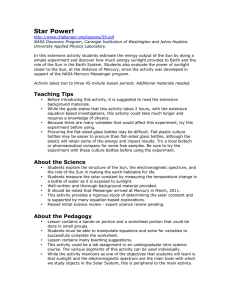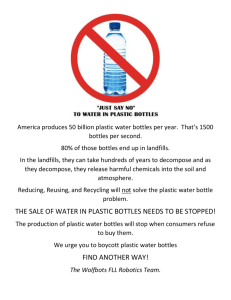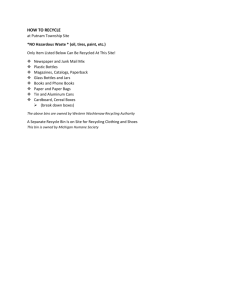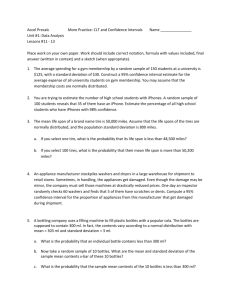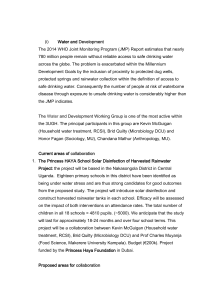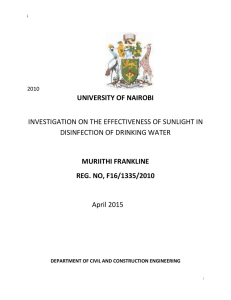Solar Disinfection Fact Sheet (.doc)
advertisement
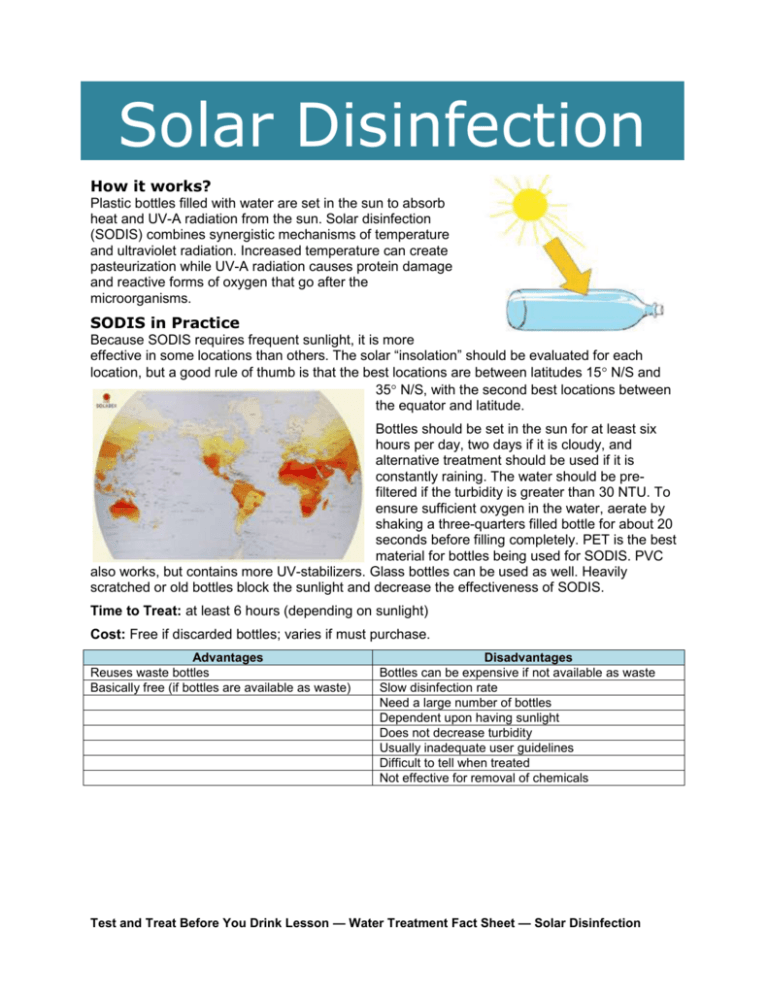
Solar Disinfection How it works? Plastic bottles filled with water are set in the sun to absorb heat and UV-A radiation from the sun. Solar disinfection (SODIS) combines synergistic mechanisms of temperature and ultraviolet radiation. Increased temperature can create pasteurization while UV-A radiation causes protein damage and reactive forms of oxygen that go after the microorganisms. SODIS in Practice Because SODIS requires frequent sunlight, it is more effective in some locations than others. The solar “insolation” should be evaluated for each location, but a good rule of thumb is that the best locations are between latitudes 15 N/S and 35 N/S, with the second best locations between the equator and latitude. Bottles should be set in the sun for at least six hours per day, two days if it is cloudy, and alternative treatment should be used if it is constantly raining. The water should be prefiltered if the turbidity is greater than 30 NTU. To ensure sufficient oxygen in the water, aerate by shaking a three-quarters filled bottle for about 20 seconds before filling completely. PET is the best material for bottles being used for SODIS. PVC also works, but contains more UV-stabilizers. Glass bottles can be used as well. Heavily scratched or old bottles block the sunlight and decrease the effectiveness of SODIS. Time to Treat: at least 6 hours (depending on sunlight) Cost: Free if discarded bottles; varies if must purchase. Advantages Reuses waste bottles Basically free (if bottles are available as waste) Disadvantages Bottles can be expensive if not available as waste Slow disinfection rate Need a large number of bottles Dependent upon having sunlight Does not decrease turbidity Usually inadequate user guidelines Difficult to tell when treated Not effective for removal of chemicals Test and Treat Before You Drink Lesson — Water Treatment Fact Sheet — Solar Disinfection
